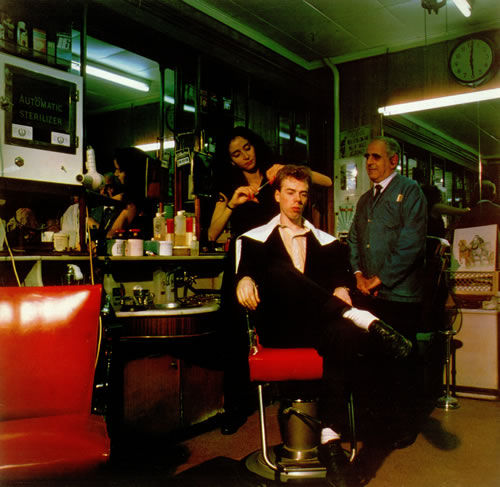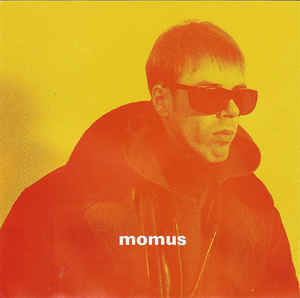Inexplicable Charisma... #9 The Hairstyle of the Devil
- John Robinson
- Oct 11, 2019
- 4 min read
Released in March 1989, this was the first Creation Records single to reach the top 100, reached No. 2 in the independent charts and was apparently Steve Wright's Record of the Week on Radio 1 daytime. The cover shows Momus as the Devil of the title, receiving the hairstyle of the title.

1988 saw Momus tour with Felt, Biff Bang Pow and The Beloved. In particular, The Beloved were a dance / pop act with an acid house sound absolutely of the time. When Biff Bang Pow dropped out of a tour, The Shamen took their place, right at the time they were changing from a psychedelic rock band influenced by the 13th Floor Elevators to an acid house group who would shortly have a massive hit with Progen (Move any Mountain).
Momus eschewed any direct involvement with the psychedelic movement, did not take drugs and yet was clearly influenced by the musical shift taking place. When he returned home from touring Tender Pervert, he returned to Scarf Studio in Mile End with the engineer Nigel Palmer and worked on a new track heavily influenced by house and Detroit techno.
The resultant track required lyrics, and Momus told the very personal story of a love triangle between himself, a promoter working for Factory records called Nicki Kefalas (who was actually issued the label asset number FAC161), and Martin Heath, the founder of Rhythm King records (who had signed amongst others The Beatmasters and S-Express). Each male in the triangle hears about the other from the girl, and becomes fascinated with "the inexplicable charisma of the rival".
The music uses samples from Kevin Saunderson and has a propulsive dance beat. The tune was based on a revision of the chord sequence from a Charles Aznavour song "Yesterday when I was Young", via a cover version by New York singer "Little Annie", from her album Jackomo (nothing to do with Freddie Flintoff). The production is superb and seems clinically designed to be a hit. There are various mixes, including the 7" version mixed by The Grid (Dave Ball/Richard Norris), the 12" version and an album version included on the CD release of Don't Stop the Night.
The song was a turntable hit, played by Radio 1, a success on the independent charts and a notable calling-card for Creation. It even breached the top 100 Official Chart of the time. Momus returned to the studio shortly after to work on a follow up, which would become the song "Lord of the Dance". This would not be released as a single, however, and thereafter Momus and another recording engineer, Doug Martin, moved into Spike Studio to complete the next album.
Why was "Hairstyle of the Devil" not a bigger hit? Momus himself points out the coldness of the lyrics, the reliance on wordplay and wit without the benefit of warmth and empathy that later artists such as Jarvis Cocker would have. There's an element of misogyny* in the lyrics too, the female in the relationship is told "shut up, don't answer back" by at least one man in the triangle. Momus as a character is not very relatable to a general audience, not like the East End lads done good of the Pet Shop Boys, nor the working class heroes of the Human League, Pulp or Suede, and clearly not a Detroit techno wizard, being very much the wrong colour. It's also fair to say that the presence of Nicki Kefalas on the cover does not detract enough from the visage of Momus, who may simply not have been conventionally attractive enough for a general pop audience of the time. And in case you are wondering, Beck apparently never heard it.
The intention for this song to have greater success seems evidenced for me by the profusion of hooks, by the forcefulness of the chorus and the fact that although utilising a minor key, the melody and chord sequence are inclined to resolve in a pleasing way. Listen to the recording here at this point: note how the ascending portamento effect reaches the high tone you would expect it to: contrast this with the unresolved endings of Islington John or In the Sanitorium, or the teasing swirling of strings in Voyager: this song aims to please, to have what Momus would later describe as "catnip".
The single version of Hairstyle of the Devil was backed with "Amongst Women Only", which was included on the album and will be discussed there. The 12" version also included the track "Monsters of Love", which I will discuss when we reach the 1990 compilation of the same name.
*Momus has said since this piece was published that "...the 'misogyny' in the line "Shut up, don't answer back" is meant to show that curiosity about the third party in a triangle is held in an unstable balance with pain. The character both does and doesn't want to know about his rival."
This reading both makes sense and is simpler than my own reading, which is Guy#1 responding to her attempts to stop him questioning her endlessly about Guy#2, and Guy#1 disregarding her pleas, treating her personality and needs as almost irrelevant compared to his narcissistic masochism.





Comments